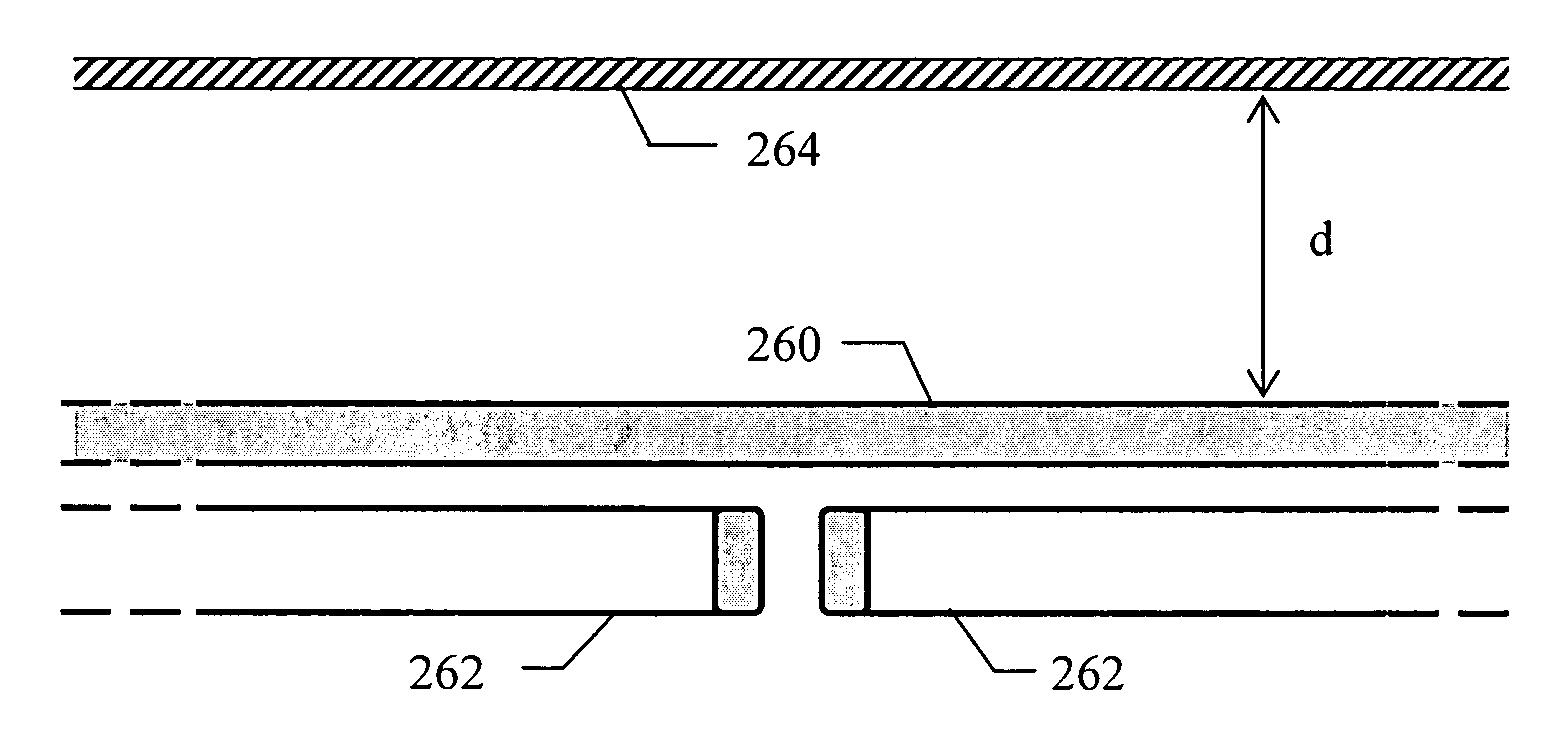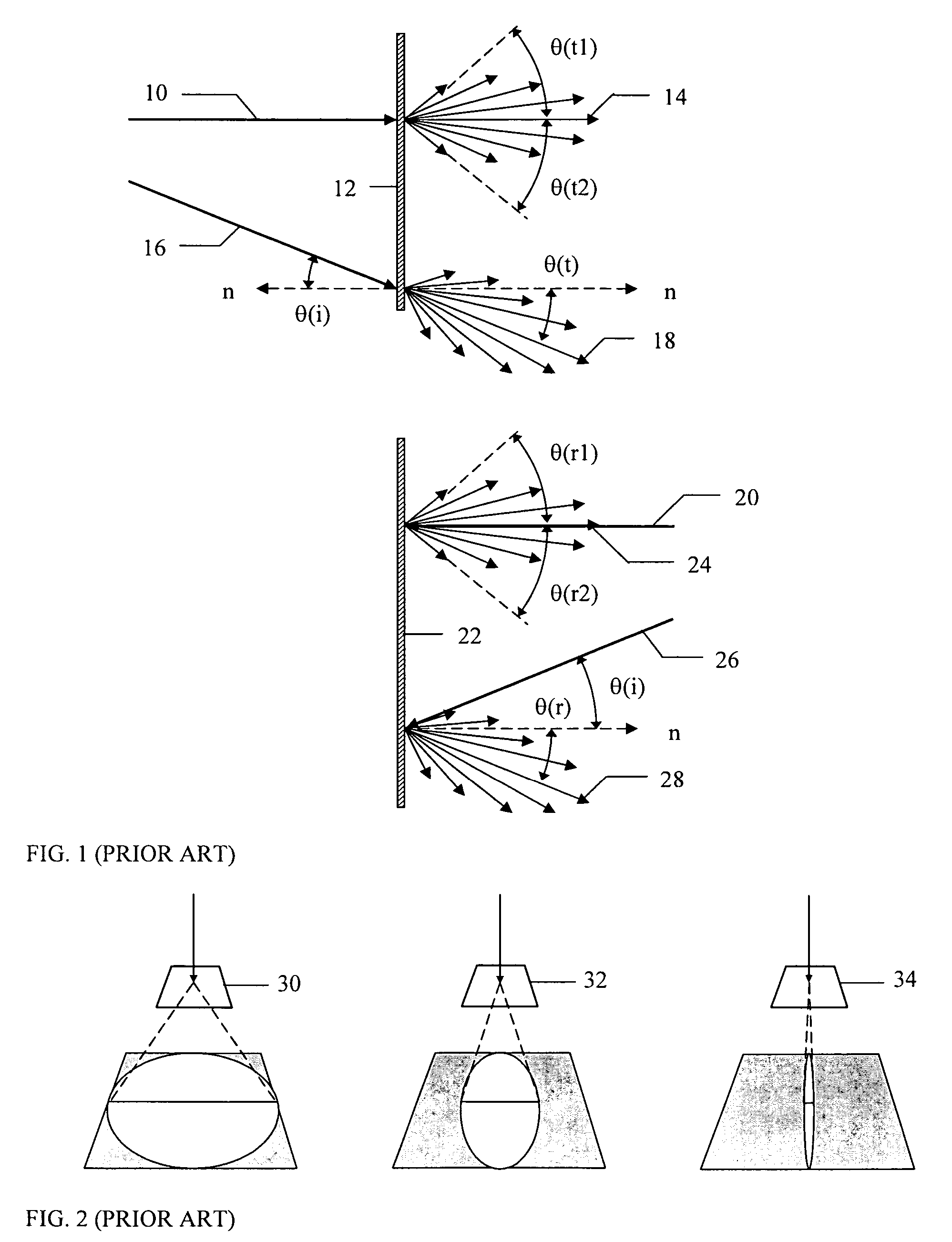Light control devices implemented with diffusers having controllable diffusion characteristics
a technology of light control device and diffuser, which is applied in the direction of lighting and heating equipment, instruments, lighting, etc., can solve the problems of not being able to see an image of the light source, holographic diffuser, and kinoform diffuser
- Summary
- Abstract
- Description
- Claims
- Application Information
AI Technical Summary
Benefits of technology
Problems solved by technology
Method used
Image
Examples
Embodiment Construction
[0144]A kinoform diffuser made in accordance with this disclosure is composed of a complex surface relief pattern that produces controllable diffusion characteristics with off-axis transmittance and reflectance properties, elimination of zero-order beam, and freedom from spectral dispersion under achromatic illumination.
[0145]Prior art techniques as described by Gray enable the fabrication of surface-relief holographic diffusers that exhibit elimination of zero-order beam and freedom from spectral dispersion under achromatic illumination. However, on page 767, Gray states: “The incoherent summation of uncorrelated speckle patterns . . . can be carried out by making a series of exposures of a photoresist film to the far-field speckle pattern from a ground glass diffuser, moving a new part of the ground glass into the laser beam for each exposure.” As noted by Dainty, each laser speckle pattern is uncorrelated with respect to the other patterns.
[0146]Laboratory experiments performed b...
PUM
 Login to View More
Login to View More Abstract
Description
Claims
Application Information
 Login to View More
Login to View More - R&D
- Intellectual Property
- Life Sciences
- Materials
- Tech Scout
- Unparalleled Data Quality
- Higher Quality Content
- 60% Fewer Hallucinations
Browse by: Latest US Patents, China's latest patents, Technical Efficacy Thesaurus, Application Domain, Technology Topic, Popular Technical Reports.
© 2025 PatSnap. All rights reserved.Legal|Privacy policy|Modern Slavery Act Transparency Statement|Sitemap|About US| Contact US: help@patsnap.com



